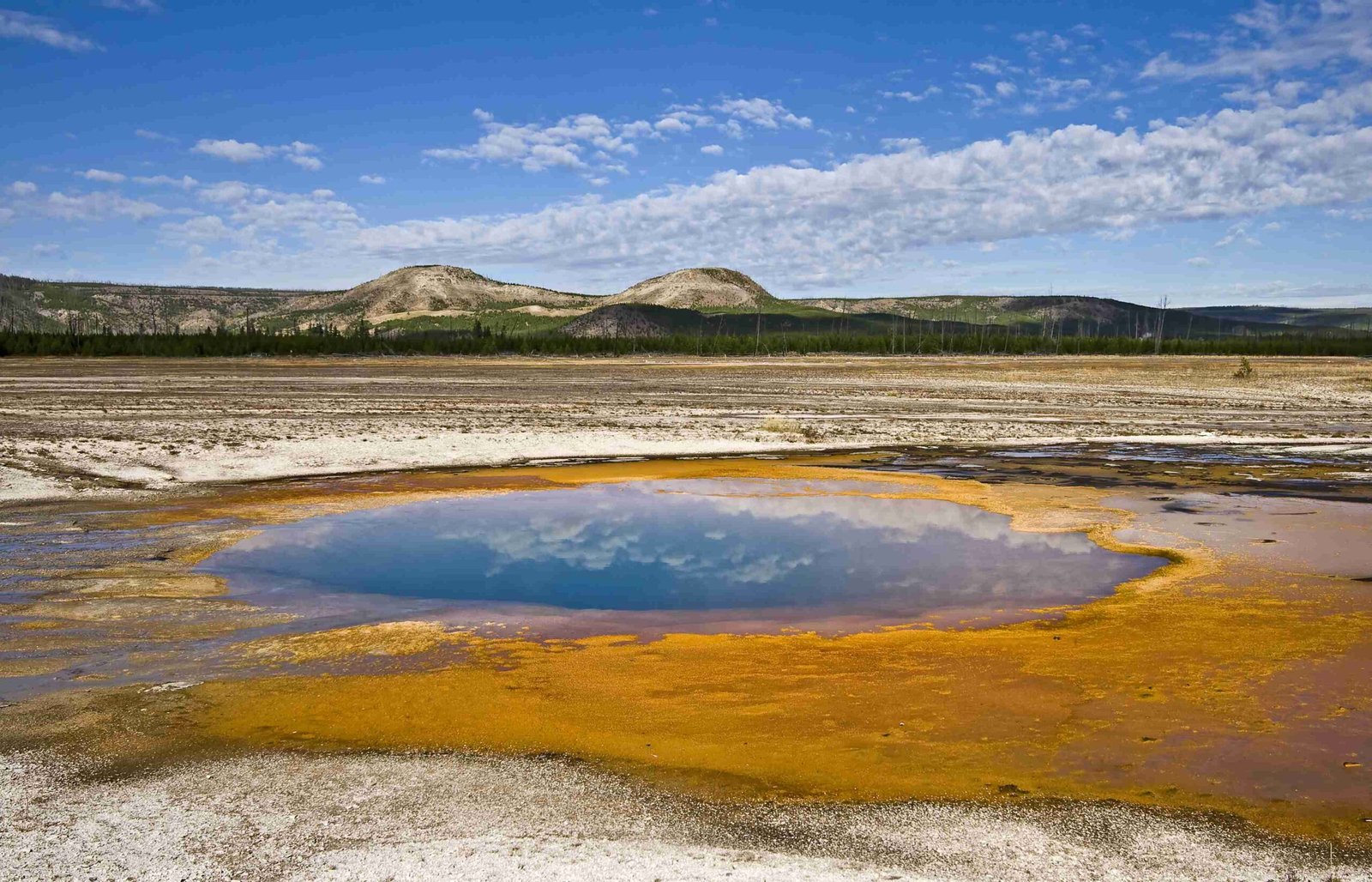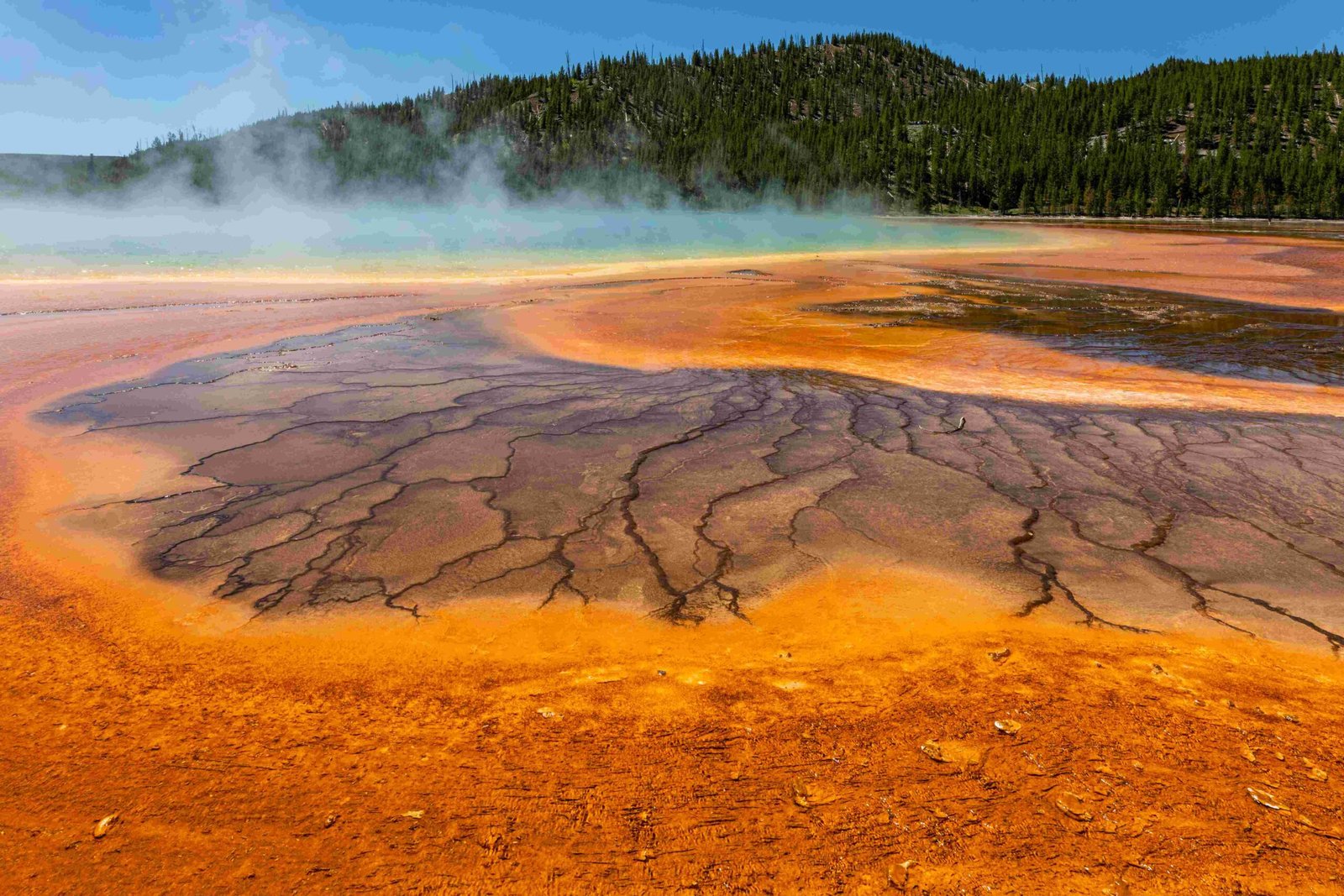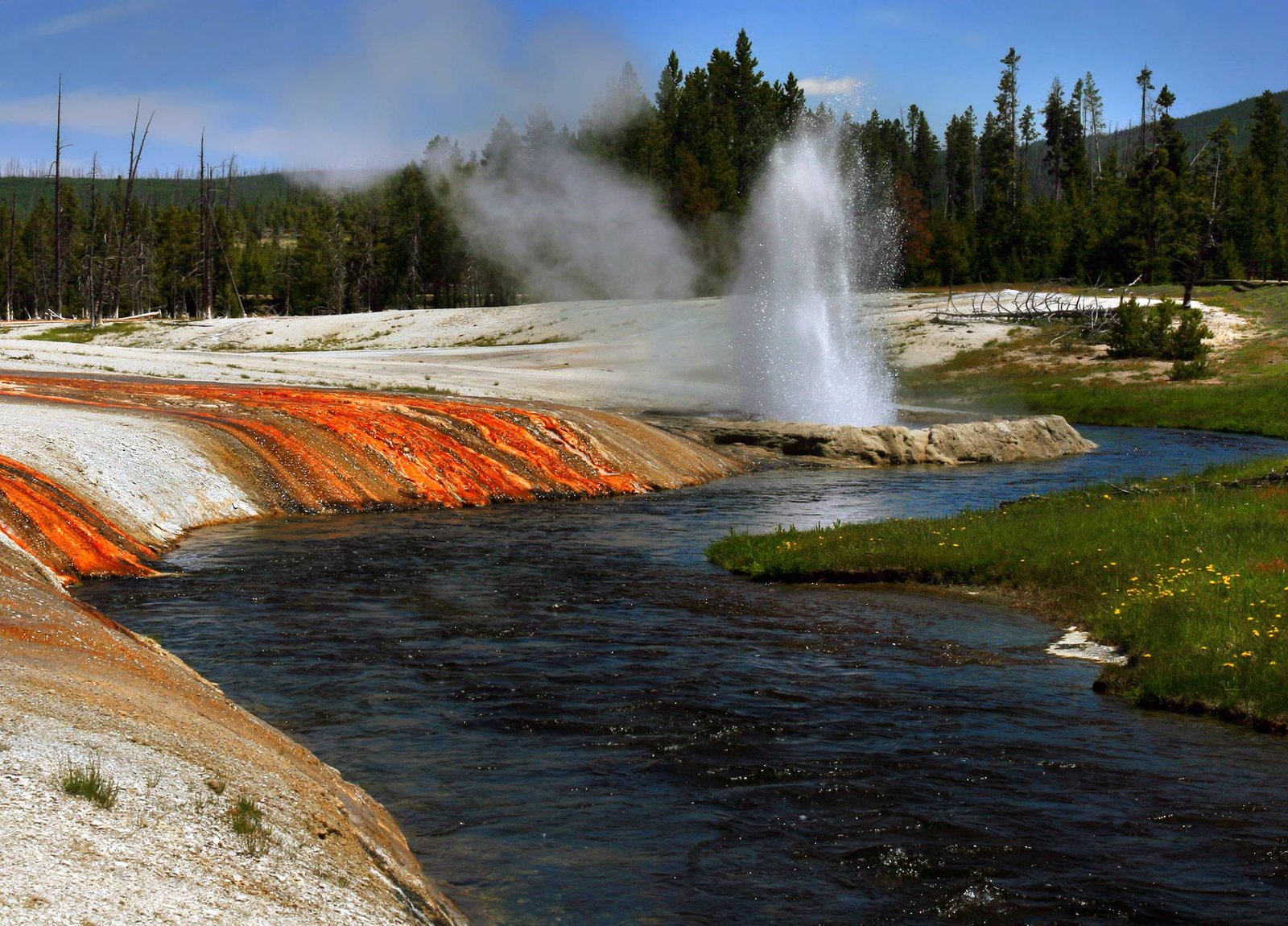Yellowstone National Park, established in 1872, is America’s first national park and a treasure trove of natural wonders. Spanning nearly 3,500 square miles across Wyoming, Montana, and Idaho, it’s home to diverse ecosystems, abundant wildlife, and extraordinary geothermal features. This article delves into the park’s unique attractions, offering insights for visitors to explore Yellowstone National Park and its unique natural wonders.
What Are the Most Impressive Geothermal Features in Yellowstone?

Yellowstone’s geothermal features are among its most captivating attractions. The park sits atop a supervolcano, resulting in an array of hot springs, geysers, mud pots, and fumaroles.
Notable Geysers:
- Old Faithful:
- Erupts every 90 minutes on average
- Eruptions last 1.5 to 4.5 minutes
- Reaches heights up to 185 feet
-
Water temperature at vent: 204°F (95.6°C)
- World’s largest active geyser
- Irregular eruption intervals
- Can reach heights over 300 feet
Remarkable Hot Springs:
- Grand Prismatic Spring:
- Largest hot spring in the United States
- Known for vibrant colors due to thermophilic microorganisms
-
Best viewed from Fairy Falls Trail overlook
-
Mammoth Hot Springs:
- Creates travertine terraces
- Located outside Yellowstone Caldera boundary
- Accessible via boardwalks and trails
Where Are the Best Wildlife Viewing Opportunities in Yellowstone?

Yellowstone offers exceptional wildlife viewing opportunities throughout the year. Here’s a guide to help you spot various species:
Seasonal Wildlife Viewing:
| Season | Best Animals to Spot |
|---|---|
| Spring | Elk calves, bison calves, bear cubs |
| Summer | Wolves, bears, elk |
| Fall | Elk (during rut), bison, moose |
| Winter | Wolves, coyotes, bison |
Prime Viewing Locations:
- Lamar Valley:
- Known as the “Serengeti of North America”
-
Excellent for spotting wolves, bears, elk, and bison
-
Hayden Valley:
-
Prime location for grizzly bears, wolves, and elk
-
Grand Loop Road:
- Passes through various habitats
- Increases chances of spotting diverse wildlife
What Are the Must-Try Hiking Trails in Yellowstone?
Yellowstone offers a variety of hiking trails suitable for different skill levels and interests:
- Old Faithful Area Trails:
- Difficulty: Easy to moderate
- Features: Views of geothermal features
-
Highlight: Observation Point Trail (2 miles, 200-foot elevation gain)
-
Mystic Falls Trail:
- Length: 2.5 miles
- Difficulty: Moderate
- Features: 70-foot Mystic Falls
-
Starting point: Biscuit Basin parking area
-
Mount Washburn Trail:
- Length: 6 miles round-trip
- Difficulty: Moderate to strenuous
- Elevation gain: 1,400 feet
- Features: Panoramic views of the park
Which Scenic Viewpoints Offer the Most Breathtaking Views?
Yellowstone is renowned for its scenic viewpoints that showcase its natural wonders:
- Grand Prismatic Spring Overlook:
- Location: Near Fairy Falls Trail
- GPS: 44.4563° N, 110.8383° W
- Accessibility: Short hike from Fairy Falls Trailhead
-
Best time for photography: Early morning or late afternoon
-
Mount Washburn Summit:
- GPS: 44.7972° N, 110.4643° W
- Accessibility: 6-mile round-trip hike
- Best time for photography: Late morning to early afternoon
How Can Visitors Responsibly Enjoy Yellowstone’s Natural Wonders?
To ensure the preservation of Yellowstone’s unique ecosystems and wildlife, visitors should follow these guidelines:
- Maintain safe distances from wildlife:
- 100 yards from bears and wolves
-
25 yards from other animals
-
Use binoculars for wildlife observation
-
Stay in vehicles when viewing wildlife from roads
-
Follow park rules:
- No feeding or approaching wildlife
-
Stay on designated trails and boardwalks
-
Check trail conditions and seasonal closures before hiking
-
Practice Leave No Trace principles
By following these guidelines, visitors can responsibly explore Yellowstone National Park and its unique natural wonders while helping to preserve this remarkable ecosystem for future generations.
References:
1. Wikipedia: Geothermal areas of Yellowstone
2. NPS: Hydrothermal Systems
3. YouTube: Yellowstone Geothermal Wonders

